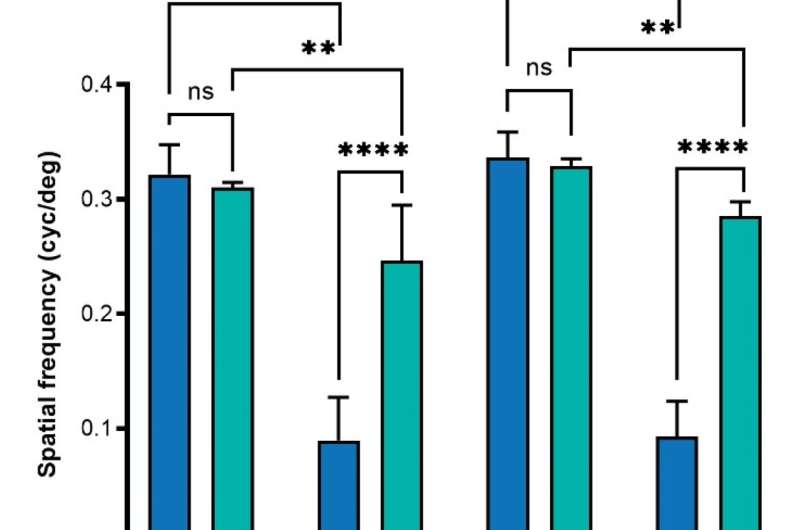Home » Health News »
Scientists pinpoint genetic target with promise for treating many forms of blindness

Developing therapies for genetic forms of blindness is extremely challenging, in part because they vary so widely, but scientists from Trinity College Dublin have highlighted a target with great promise for treating a range of these conditions.
The scientists have highlighted that a specific gene (SARM1) is a key driver in the damage that ultimately leads to impaired vision (and sometimes blindness), and—in a disease model—showed that deleting this gene protects vision after a chemical kick-starts the chain of dysfunction that mimics a host of ocular conditions.
This means that therapies targeting suppression of SARM1 activity may hold the key to effective new options for treating a suite of diseases that can have a devastating impact on quality of life, and for many of which there are no treatment options currently available.
The scientists, led by a team from Trinity’s School of Genetics and Microbiology, have just published their findings in the International Journal of Molecular Sciences.
First author on the paper, Laura Finnegan, a Ph.D. Candidate at Trinity, said: “In response to injury SARM1 contributes to a process that leads to the degeneration of specialized cells and their axons in the eye. When this happens it essentially means that the optic nerve can no longer deliver signals from the eye to the brain.
“Impaired vision and blindness is extremely debilitating for millions of people across the globe, which is one of the main motivations for us to seek to better understand the genetic causes and, potentially, develop life-changing therapies.”
Jane Farrar, Professor in Trinity’s School of Genetics and Microbiology, senior author on the paper, said:
“Another important finding was that visual function was still preserved when reassessed four months after SARM1 was deleted, indicating that the benefits can remain over time. This raises hopes that a targeted therapy delivered early enough may offer people diagnosed with an ocular neuropathy long-lasting preservation of sight.
Source: Read Full Article



